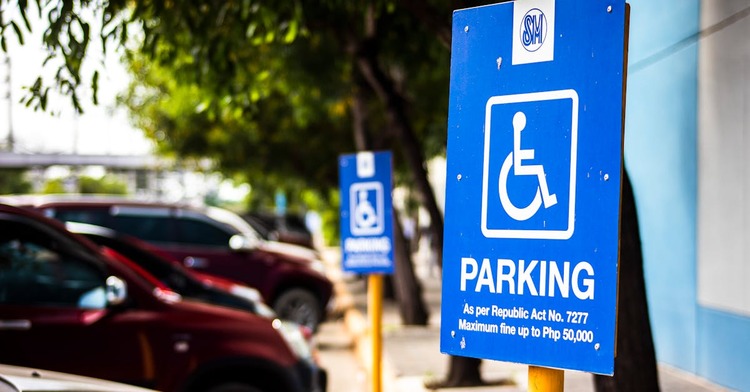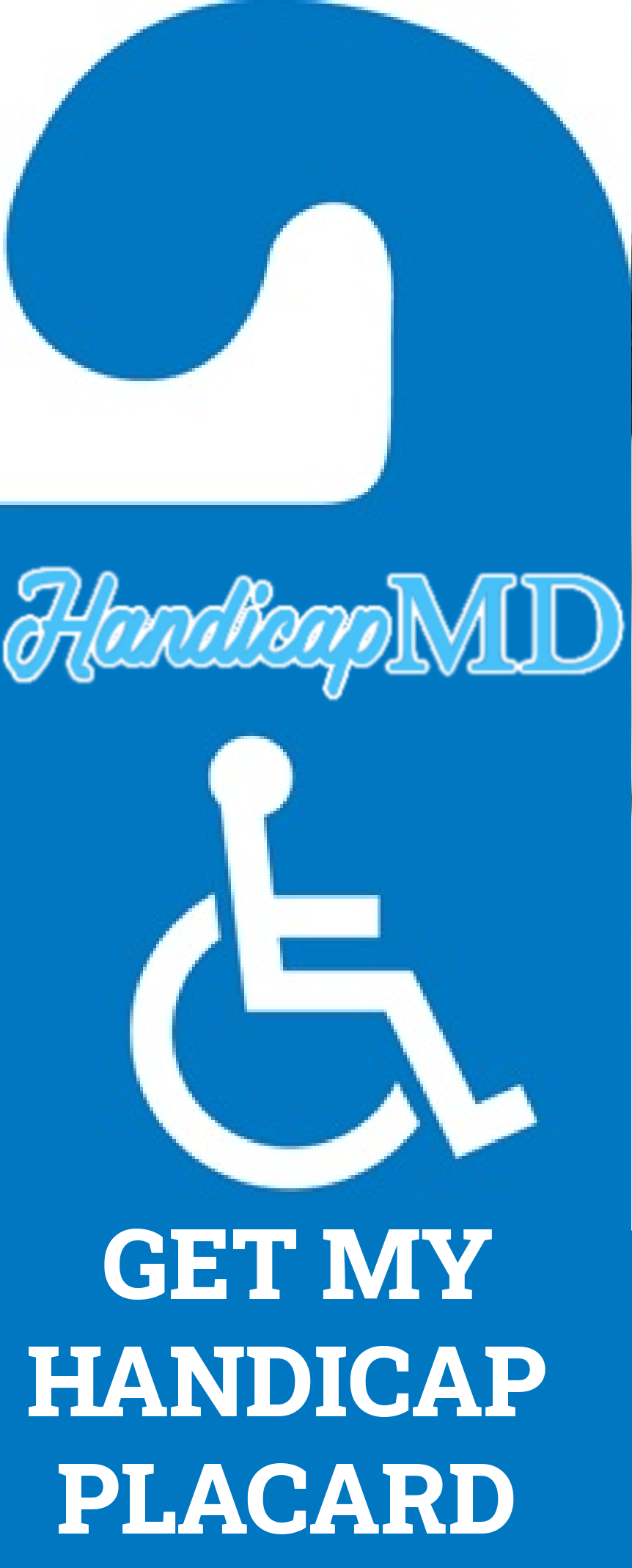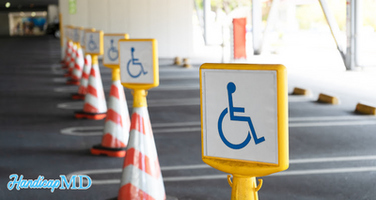
Get a Disabled Parking Permit for Chemotherapy
Get a Disabled Parking Permit for Chemotherapy - Patients undergoing chemotherapy may experience significant fatigue, pain, or other physical challenges that make walking long distances difficult. A disabled parking permit allows these patients to park in designated spots closer to their destinations, thus reducing physical strain and providing easier access to treatment facilities and other necessary locations.
Why a Patient Needs a Disabled Placard After Chemotherapy
Chemotherapy, a cornerstone treatment for many types of cancer, is known for its effectiveness in combating malignant cells. However, it also comes with a host of side effects that can significantly impact a patient's quality of life and mobility. For many patients undergoing or recovering from chemotherapy, obtaining a disabled parking placard becomes essential. This article delves into the reasons why a patient might need a disabled placard post-chemotherapy and how it aids in their daily life.
Severe Fatigue
One of the most common side effects of chemotherapy is severe fatigue. This is not just ordinary tiredness but a profound exhaustion that can make even simple tasks seem insurmountable. Fatigue from chemotherapy can last for weeks or even months after treatment ends. For patients experiencing this level of fatigue, walking long distances from parking spots to building entrances can be extremely challenging. A disabled placard allows them to park in closer, designated spots, conserving their energy for more essential activities.
Peripheral Neuropathy
Chemotherapy can cause peripheral neuropathy, a condition resulting from damage to the peripheral nerves. Symptoms include numbness, tingling, pain, and weakness, particularly in the hands and feet. This condition can make walking difficult and increase the risk of falls. Having a disabled placard means patients can park closer to their destinations, reducing the distance they need to walk and the potential for injury.
Compromised Immune System
Chemotherapy often suppresses the immune system, leaving patients more susceptible to infections. This immunosuppression necessitates minimizing exposure to crowded or public areas. Disabled parking spaces, typically located closer to building entrances, help reduce the time patients spend in potentially crowded areas like parking lots and garages. This minimizes their risk of exposure to pathogens, which is crucial for their safety and recovery.
Physical Weakness and Pain
Chemotherapy can lead to overall physical weakness and pain, making it difficult for patients to move around easily. Muscle weakness, joint pain, and general malaise are common. These symptoms can severely limit a patient's ability to walk long distances. A disabled placard provides the convenience of closer parking, easing the physical burden and allowing patients to access essential services more comfortably.
Psychological Stress
The journey through cancer treatment is not just physically taxing but also mentally and emotionally draining. The added stress of finding parking and walking long distances can exacerbate this burden. Knowing they have access to closer parking can alleviate some of the stress and anxiety patients feel, allowing them to focus more on their recovery and less on logistical concerns.
Frequent Medical Appointments
Patients undergoing chemotherapy often have frequent medical appointments for treatments, follow-ups, and supportive care. Disabled parking placards ensure that they can easily access hospitals, clinics, and pharmacies. This convenience is particularly important for those who may need to visit these facilities multiple times a week.
Mobility Aids and Equipment
Some patients may require mobility aids such as canes, walkers, or wheelchairs due to the effects of chemotherapy. Disabled parking spaces are typically wider, accommodating the extra space needed for these aids. This makes it easier for patients to get in and out of their vehicles and reduces the physical strain involved in managing their mobility equipment.
Personalized Care Needs
Each patient's experience with chemotherapy is unique, with varying degrees of side effects and mobility issues. A disabled placard allows for personalized care by acknowledging and accommodating these individual needs. It provides patients with a sense of dignity and independence, enabling them to manage their daily activities with greater ease and less discomfort.
Accessibility to Essential Services
Beyond medical appointments, patients still need to access other essential services such as grocery stores, banks, and places of worship. A disabled placard ensures they can park closer to these services, making their errands and activities less taxing. This accessibility is crucial for maintaining a sense of normalcy and independence during a challenging time.
Legal and Practical Considerations
Many jurisdictions recognize the debilitating effects of chemotherapy and have provisions for issuing disabled placards to those affected. The legal framework ensures that patients can apply for and receive these placards with proper medical certification, facilitating their access to designated parking spots. This legal recognition underscores the importance of providing support to patients dealing with the aftermath of chemotherapy.
Obtaining a disabled placard post-chemotherapy is not just about convenience; it is a critical component of supportive care for patients dealing with the aftermath of cancer treatment. From addressing severe fatigue and peripheral neuropathy to reducing the risk of infections and providing psychological relief, a disabled placard significantly enhances a patient's ability to manage daily activities. By facilitating closer parking and easier access to essential services, disabled placards help patients maintain their independence, dignity, and quality of life during a challenging period.
Handicapped Parking Eligibility for Cancer Patients
To be eligible for a handicapped parking permit as a cancer patient, one must typically demonstrate that their condition substantially impairs their ability to walk or that they require the use of a mobility aid. Eligibility criteria can include:
- Inability to walk without the use of a supportive device.
- Restrictions by lung or heart disease.
- Use of portable oxygen.
- Severe limitation in the ability to walk due to neurological, orthopedic, or arthritic conditions.
- Visual impairment.
Doctors often need to certify the patient's condition as part of the application process for a disabled parking permit.
There is a common misconception that handicapped parking permits are exclusively for individuals with visible mobility impairments that require aids like canes, walkers, or wheelchairs. However, healthcare providers understand that chronic illnesses and their intensive treatments can also significantly impair a person's ability to walk long distances.
For many individuals with advanced cancer or those undergoing rigorous treatments such as chemotherapy, the act of walking across a parking lot can be exceedingly painful or exhausting. Although their ability may vary from day to day, access to handicapped parking spaces closer to elevators or building entrances can significantly alleviate pain and enhance quality of life. If you're experiencing these challenges, the initial step toward obtaining a handicapped parking permit is to discuss your mobility issues and symptoms with your healthcare provider.
How to Obtain a Disability Parking Tag for Chemotherapy via HandicapMD.com
If you are undergoing chemotherapy and need a disability parking tag, you can simplify the process by using an online service like HandicapMD.com. Here’s a step-by-step guide to help you secure your tag online:
Create an Account: Register for an account on the website. You'll need to provide basic personal information and details about your medical condition. Ensure your information is accurate and up-to-date. Complete the Medical Forms: You will need to fill out a medical questionnaire related to your condition. Be honest and detailed about how chemotherapy affects your mobility and daily activities.
Consultation with a Healthcare Provider: HandicapMD.com offers the convenience of connecting you with a licensed healthcare provider online. During this consultation, discuss your mobility challenges and the impact of your treatment. The healthcare provider will evaluate your situation to determine if you qualify for a disability parking tag.
Medical Certification: If the healthcare provider determines you are eligible, they will certify your application. This certification is a crucial part of your disability tag application. Submit Your Application: Submit your application to the appropriate state department or motor vehicle agency.
Receive Your Tag: Once your application is approved, you will receive your disability parking tag by mail. The duration for processing and delivery can vary by state.
Using HandicapMD.com can streamline the process of obtaining a necessary disability parking tag while you focus on your health and treatment. It’s designed to reduce the bureaucratic stress often associated with such applications, allowing you to secure your parking privileges with ease and convenience.
What Disabilities Qualify for Handicap Parking
For cancer patients, specific disabilities that typically qualify for handicap parking include:
- Extreme physical fatigue or weakness that limits mobility.
- Side effects from chemotherapy or radiation treatments that significantly impair walking or require frequent breaks.
- The necessity to use crutches, a wheelchair, a walker, or other mobility aids.
- Severe joint pain or instability that affects walking ability.
To qualify for a handicap placard, the requirements generally involve having a certified medical condition that significantly impairs mobility. The specific criteria can vary by region, but typically include conditions such as:
- Inability to Walk Without Assistance - This includes needing the support of a brace, cane, crutch, another person, prosthetic device, wheelchair, or other assistive devices.
- Restricted by Lung Disease - Significantly limited in their ability to breathe or walk due to lung disease, as measured by specific medical tests.
- Use of Portable Oxygen - Needing to use portable oxygen devices.
- Cardiac Conditions - Having a cardiac condition classified as Class III or IV by the American Heart Association.
- Severe Vision Impairment - Includes persons who are legally blind.
- Limited Mobility Due to Neurological, Orthopedic, or Arthritic Conditions - Conditions that severely limit the ability to walk.
- Certain Other Conditions - Some regions may include other specific conditions that cause mobility limitations.
To obtain a handicap placard, an application must usually be filled out and submitted to the appropriate local or state authority. This form typically requires a healthcare provider’s certification attesting to the applicant's condition and its impact on their mobility. The type of placard (temporary or permanent) often depends on whether the disability is temporary or permanent.
Chemotherapy is a type of cancer treatment that uses drugs to destroy cancer cells. It targets cells that grow and divide quickly, a characteristic of most cancer cells. However, it can also affect some healthy cells that grow rapidly, such as those in the bone marrow, digestive tract, and hair follicles, which leads to some of the common side effects of treatment.
Uses of Chemotherapy
Primarily used to:
- Cure Cancer: Completely eliminate all cancer cells in the body, with no expected recurrence.
- Control Cancer: Prevent cancer from spreading to other parts of the body, slow its growth, or kill cancer cells that have spread to other areas.
- Palliate Symptoms: Relieve symptoms caused by cancer, improving quality of life when cure is not possible.
Why a Person on Chemotherapy Might Need a Disability Tag
Patients undergoing chemotherapy might need a disability parking tag for several reasons:
- Fatigue: it can cause extreme fatigue, making it difficult to walk long distances from parking spaces to destinations.
- Physical Weakness: Side effects may include muscle weakness and general reduction in physical stamina.
- Increased Risk of Infection: Because it can weaken the immune system by affecting the bone marrow, avoiding crowded places such as busy parking lots can help reduce the risk of infections.
- Frequent Medical Visits: Patients often have frequent appointments for treatment and follow-up, and closer parking can help manage high levels of physical and emotional stress during these visits.
- Neuropathy: Some chemotherapeutic agents can cause neuropathy—numbness, tingling, and pain in the hands and feet—which can impair walking and require closer access to facilities.
A disability parking tag helps accommodate the needs and challenges faced by cancer patients receiving chemotherapy, ensuring they have easier access to facilities and a safer, more manageable environment while they are dealing with their treatment and its effects.
Validity/expiration of placards/permits
The validity and expiration of handicap placards or permits are crucial aspects that users must understand to ensure compliance with parking regulations and avoid penalties. Here’s an expanded overview of the different types of placards and their respective expiration periods:
Permanent Placards
Permanent placards are generally issued to individuals with long-term disabilities. These placards are valid for a fixed duration of two years and expire on June 30th of every odd-numbered year, regardless of the date of issuance. Holders of permanent placards must be aware of this uniform expiration date and are typically required to renew their placards before expiry to continue enjoying parking privileges.
Temporary Parking Placards
Temporary parking placards are designed for individuals with short-term mobility impairments, which might result from surgery, injury, or other temporary conditions. These placards are valid for up to 180 days, or six months, or until the date specified by the licensed medical professional on the application—whichever comes first. This flexibility allows for the duration of the placard to be tailored to the individual's expected recovery period, ensuring it is only in use during the relevant period of impairment.
Travel Parking Placards for California Residents
California residents who already possess a permanent Disabled Veteran (DV) license plate or a Disabled Person (DP) parking placard may obtain a travel parking placard. This type of placard is particularly useful for those who travel and require the use of disabled parking facilities outside of their personal vehicle. The travel placard is valid for 30 days from the date it is issued by the Department of Motor Vehicles (DMV), which is helpful for short trips or travel within a limited timeframe.
Travel Parking Placards for Non-Residents
For non-residents traveling to or within areas with specific parking accommodations for disabled individuals, a travel parking placard can be issued. These placards are valid for 90 days from the date of issuance or until the date specified by their licensed medical professional, whichever is less. This arrangement helps accommodate non-resident disabled visitors, allowing them to utilize necessary parking spaces during their stay.
In all cases, it is important for placard holders to be aware of the expiration dates and renew or return their placards as necessary to ensure they are using valid permits. This helps avoid penalties and ensures that parking spaces designated for disabled individuals are used appropriately.
How Do I Get a Handicap Placard in Your State During Chemotherapy
The process to obtain a handicap placard generally involves several steps:
- Doctor's Certification: Obtain a certification from your healthcare provider outlining your mobility restrictions and the need for a handicap parking permit.
- Application Form: Complete an application form specific to your state. These forms are typically available online at the state’s Department of Motor Vehicles (DMV) website or at a local DMV office.
- Submission and Processing: Submit the application and any required documentation to the designated state authority, either via mail or in person. Some states may offer online submission options.
How Much Does a Handicap Placard Cost?
The cost of obtaining a handicap parking placard can vary by state. Many states provide these placards for free, or for a nominal fee to cover the cost of processing. It's important to check with your local DMV for the exact fees associated with obtaining a handicap parking permit.
Where to Hang the Permit?
Once obtained, the handicap permit should be displayed properly to avoid fines and ensure it is visible to law enforcement officers and parking officials. Hang the permit from the rearview mirror when parked and remove it while driving to ensure it does not obstruct your view.
Required Documentation
To apply for a disabled parking permit, patients need to provide specific documentation. While requirements vary by state, the following are commonly requested:
- Medical Certification: A signed statement from a licensed physician, verifying the patient's condition and its impact on mobility.
- Patient Information: Personal details, including name, address, date of birth, and contact information.
- Proof of Identity: A government-issued ID, such as a driver's license or passport.
- Proof of Residency: Documentation like utility bills or lease agreements to establish residency within the state.
Online Application Process
The online application process for a disabled parking permit typically involves several steps:
- Visit the HandicapMD Official Website: CLCK HERE TO GET STARTED - We adhere to your state's Department of Motor Vehicles (DMV) rules and regulations.
- Complete the Application Form: Fill out the required information on the online form. This will include personal details, medical information, and the type of permit requested (temporary or permanent).
- Upload Required Documents: Scan and upload the necessary documents, including medical certification, proof of identity, and proof of residency.
- Pay the Application Fee: Some states may charge a nominal fee for processing the application. Payment can usually be made online via credit card or electronic check.
- Submit the Application: Once all information is provided and documents are uploaded, submit the application. You will receive a confirmation email with details of your application status and any further steps needed.
Tips for a Smooth Application Process
To ensure a smooth application process, consider the following tips:
- Consult Your HandicapMD Physician Early: Discuss your need for a disabled parking permit with our physicians early in your treatment. Our doctors will ensure they provide a detailed medical certification regarding your diagnosis and symptoms.
- Gather Documents in Advance: Collect all necessary documents before starting the application to avoid delays. We require 1-5 pages of medical records. Those without medical records may pay a higher fee.
- Check State-Specific Requirements: Each state has different requirements and procedures. Check your state's DMV website for specific details.
- Follow Up: After submitting your application, monitor your email for any updates or requests for additional information from the DMV.
Benefits of a Disabled Parking Permit
Obtaining a disabled parking permit offers several benefits for chemotherapy patients:
- Proximity to Entrances: Access to parking spaces closer to building entrances reduces the physical strain of walking long distances.
- Increased Accessibility: Facilitates easier access to medical appointments, pharmacies, and essential services.
- Reduced Stress: Eases the mental and physical stress associated with finding parking, allowing patients to focus on their treatment and recovery.
- Enhanced Safety: Reduces the risk of falls or injuries by minimizing the distance patients need to walk.
Handicapped Parking Permit Information by State
Here is a guide for each state, linking to their specific pages which contain detailed information on how to apply for a disabled parking permit, what documentation is required, and any associated fees. You can find this detailed information at HandicapMD.
.png)






